Paediatrics Proctored Exam
ATI Paediatrics Proctored Exam
Total Questions : 46
Showing 10 questions Sign up for moreA neonate is displaying mottled skin, has a large fontanel and tongue, is lethargic, and is having difficulty feeding. The nurse recognizes that this is most suggestive of which disorder?
Explanation
Hypothyroidismreferstoanunderactivethyroid glandthatdoesnotproduceenoughthyroidhormones. In newborns, this condition is known as congenital hypothyroidism. Thesymptoms mentioned—mottled skin, a large fontanel (soft spot on the baby's head), a largetongue,lethargy, anddifficultyfeeding—arecharacteristic ofhypothyroidism inneonates.
Mottledskincanoccur duetodecreasedcirculationandlow bodytemperatureassociatedwith hypothyroidism. A large fontanel and tongue are common physical features seen ininfants with hypothyroidism. Lethargy and poor feeding are also typical signs of thiscondition.
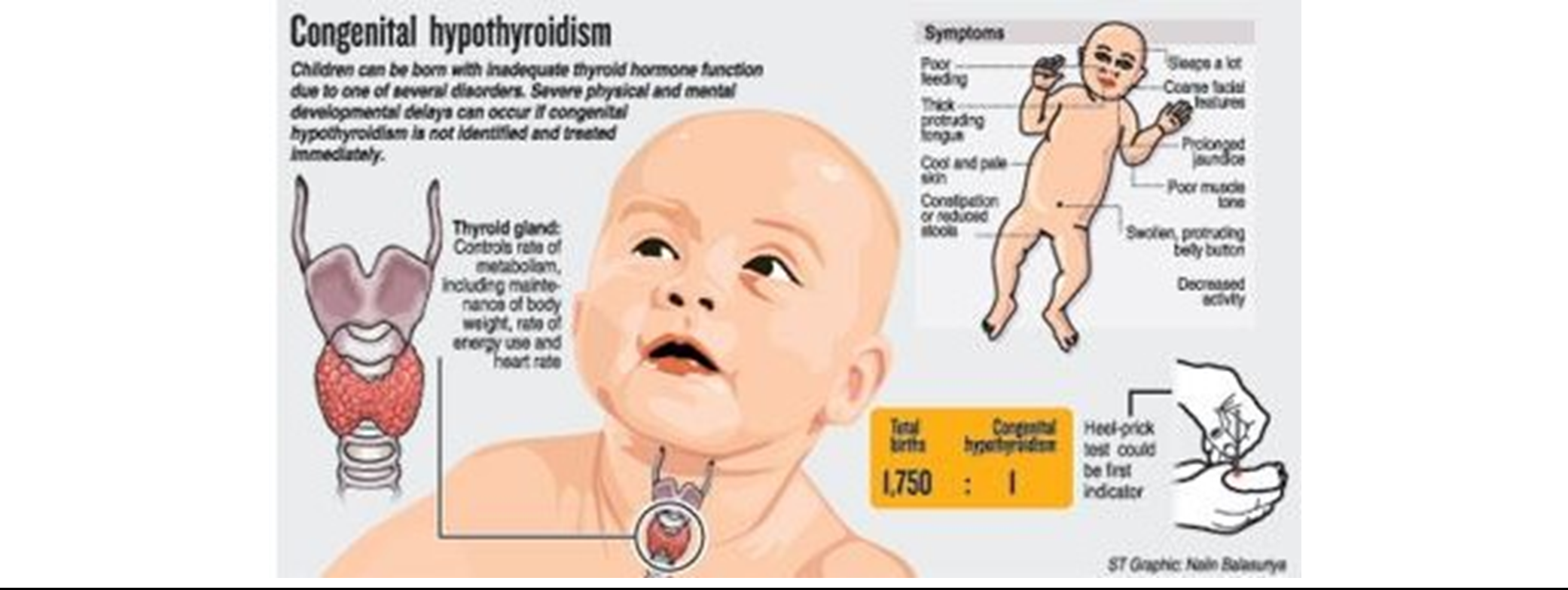
Hypoglycaemia in (option A) is incorrect because it refers to low blood sugar levels andusuallypresentswithdifferent symptomssuchas jitteriness,tremors,and sweating.
Hypocalcaemia in (option C) is incorrect because it is low calcium levels and can manifestwithsymptoms like muscle cramps, twitching,and seizures.
Phenylketonuria (PKU) in (option D) it is incorrect because it is a metabolic disordercharacterized by the inability to metabolize the amino acid phenylalanine, and it typicallypresentswith differentsymptoms such asintellectual disabilityandamustydoorto theskin.
Therefore, based on the symptoms described, hypothyroidism (B) is the most likely disorderinthisneonate. Itisimportanttoconsultahealthcareprofessionalforaproperdiagnosisandappropriatetreatment.
A mother reports that her child has episodes where he appears to be staring into space. This behaviour is characteristic of which type of seizure?
Explanation
Thebehaviourdescribed,wherethechildappearstobestaringinto space,is characteristicof
B.Absenceseizures.
Absence seizures, also known as petit mal seizures, are a type of generalized seizure thatprimarily affects children. These seizures are brief and usually last for a few seconds. Duringan absence seizure, the child may appear to be staring blankly into space, unaware of theirsurroundings.Theymaynot respond to stimuli orengagein anypurposefulactivity.After theseizure ends, the child typically resumes their previous activity without any memory of theseizure.
Atonic seizures in (option A) is incorrect because it involves a sudden loss of muscle tone,leadingtoalimp or "drop"in theperson.
Simple partial seizures in (option C) are focal seizures that affect a specific region of thebrain,causinglocalizedsymptoms suchas twitchingor tinglinginaparticularbodypart.
Tonic-clonic seizures in (option D) also known as grand mal seizures, is incorrect because itinvolves a combination of muscle rigidity (tonic phase) and jerking movements (clonicphase).
Therefore, based on the description provided, the behaviour of staring into space ischaracteristic of B. Absence seizures. It is important for the child to be evaluated by ahealthcare professional for an accurate diagnosis and appropriate management of theirseizures.
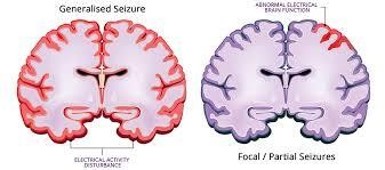
When a 2-week-old infant is seen for irritability, poor appetite, and rapid head growth with observable distended scalp veins, the nurse recognizes these signs as indicative of which disorder?
Explanation
Hydrocephalus refers to a condition characterized by an abnormal accumulation ofcerebrospinal fluid (CSF) within the ventricles of the brain. In infants, hydrocephalus cancause the head to enlarge rapidly as a result of the increased pressure exerted by theaccumulatingfluid.Thisisknownas"rapidheadgrowth."Theincreasedintracranialpressurecanlead to irritabilityand poorappetite in infants.
The distended scalp veins are another common sign of hydrocephalus. As the fluidaccumulates,itputs pressureon thebloodvessels inthe brain,causingtheveinsin thescalptobecome morevisible and distended.
Cerebral palsy in (option A) is incorrect because is a neurological disorder that affects bodymovementandmusclecoordination,butitdoesnottypicallypresentwithrapid headgrowthordistended scalp veins.
Syndrome of inappropriate antidiuretic hormone (SIADH) in (option B) is incorrect becauseitisacondition characterized byexcessivesecretionofantidiuretichormone,leadingtofluidimbalance, but it does not usually cause rapid head growth or distended scalp veins. Reye'ssyndrome (D) is a rare condition that primarily affects the liver and brain, and it does nottypicallypresent with rapid headgrowthor distended scalp veins.
Therefore, based on the signs described, hydrocephalus (C) is the most likely disorder in thiscase.Itisimportantto seekmedicalattentionpromptlyforaproperdiagnosisand appropriatemanagementofhydrocephalus in infants.
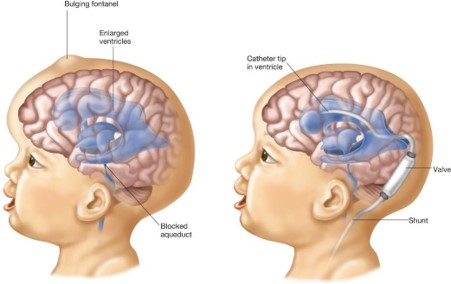
Which is assessed with Tanner staging?
Explanation
Tanner staging is a method used to assess and describe the development of secondary sexcharacteristics during puberty. It is primarily focused on the physical changes that occur asindividuals transition from childhood to adulthood. The Tanner scale consists of differentstages(ItoV)that describethedevelopmentofspecificsecondarysexcharacteristicssuchasbreastdevelopment, pubichairgrowth,genital development,and facialhair growth.
Growthhormonesecretionin(optionA)isincorrectbecauseWhilegrowthhormonedoesplay a role in the overall growth and development of individuals during puberty, Tannerstagingdoes not specificallymeasureor assessgrowth hormone secretion.
Hormone levels in (option B) is incorrect because While hormone levels, including sexhormonessuchas estrogenandtestosterone, doplayasignificantrolein thedevelopmentofsecondary sex characteristics, Tanner staging itself does not involve measuring or assessinghormone levels. Hormone levels can be assessed through laboratory testing, but this is aseparateprocess from Tanner staging
Hyperthyroidism in (option C) is incorrect because Hyperthyroidism, on the other hand, is amedical condition characterized by an overactive thyroid gland that produces an excessivenumberofthyroidhormones.Itisnotdirectlyrelatedtothedevelopmentofsecondarysexcharacteristics. Diagnosing hyperthyroidism typically involves assessing symptoms,conductingphysicalexaminations,andperformingspecificbloodteststomeasurethyroidhormone levelsandevaluatethyroidfunction.
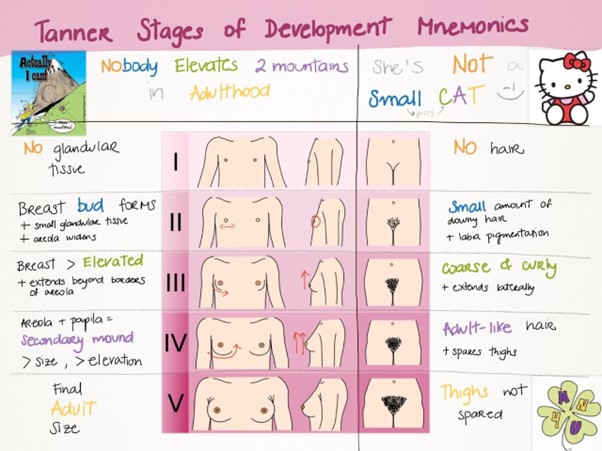
Which factor predisposes the urinary tract to infection?
Explanation
The anatomy of the urinary tract can influence the susceptibility to urinary tract infections (UTIs). In the case of young girls, their urethra is shorter compared to adult females, which increases the likelihood of bacteria reaching the bladder. The shorter urethra provides a shorter distance for bacteria to travel from the outside of the body to the bladder, making it easier for bacteria to enter and cause an infection.
Prostatic secretions in males in (option A) is incorrect because they are not directly related to the increased susceptibility to UTIs. Prostatic secretions can, however, contribute to conditions like prostatitis, which is an inflammation of the prostate gland that can be associated with urinary symptoms and sometimes bacterial infections.
Frequent emptying of the bladder in (option C) is incorrect because it is generally considered a healthy practice as it helps to flush out any potential bacteria in the urinary tract. It does not predispose the urinary tract to infection.
Increased fluid intake in (option D) is incorrect because it is generally encouraged to maintain proper hydration and urinary tract health. It can help to flush out bacteria from the urinary system, reducing the risk of infection.
While these factors may have implications for urinary tract health, the specific factor that predisposes the urinary tract to infection, particularly in young girls, is the short urethra (B).
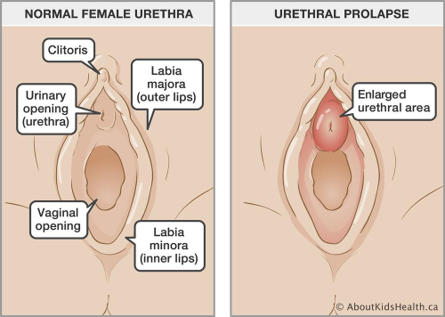
A nurse is teaching parents about diarrhea. Which statement by the parents indicates understanding of the teaching?
Explanation
Diarrhea is characterized by increased motility of the intestines, which leads to a decreased absorption of fluid and nutrients. This statement correctly indicates an understanding of the teaching regarding diarrhea.
Organisms destroy intestinal mucosal cells, resulting in an increased intestinal surface area in (Option A) is incorrect because organisms causing diarrhea can lead to damage or inflammation of the intestinal mucosal cells, but they do not destroy them to increase the intestinal surface area.
Malabsorption results in metabolic alkalosis in (Option B) is incorrect because malabsorption does not result in metabolic alkalosis. Malabsorption refers to the impaired absorption of nutrients, but it does not directly affect the acid-base balance in the body.
Diarrhea results from a fluid deficit in the small intestine in (Option D) is incorrect because diarrhea does not result from a fluid deficit in the small intestine. Diarrhea is characterized by an increased volume of fluid in the intestines and increased frequency of bowel movements.
Which statement is accurate concerning a child's musculoskeletal system and how it may be different from an adult's?
Explanation
Infants and children have open growth plates, also known as epiphyseal plates, at the ends of
their long bones. These plates are responsible for bone growth and are not fully fused until
the child reach skeletal maturity. Due to the presence of open growth plates, infants and
children are more prone to fractures because their bones are still developing and are less
dense than those of adults.
Their bones have less blood flow in (Option A) is incorrect because cchildren’s bones
actually have a greater blood flow compared to adults. This increased blood flow supports the
rapid growth and development of bones in children.
Growth occurs in children as a result of an increase in the number of muscle fibers in (option
B) is incorrect because ggrowth in children occurs primarily due to the elongation and
thickening of existing muscle fibres, not an increase in their number. This option inaccurately
suggests that children's muscles increase in fibber count to facilitate growth.
Because soft tissues are resilient in children, dislocations and spirals are less common than in
adults in (Option D is) incorrect. While soft tissues may be more resilient in children, it does
not mean that dislocations and sprains are less common than in adults. In fact, children's
ligaments and joint structures are still developing and may be more susceptible to injuries
such as sprains and dislocations compared to adults.

A child is hospitalized after a serious motor vehicle crash and has developed increased urination. What action by the nurse takes priority?
Explanation
In this scenario, the child's increased urination after a serious motor vehicle crash may
indicate a potential issue with fluid balance. Monitoring the child's intake and output is the
priority action for the nurse. This involves accurately measuring and recording the fluids the
child consumes (intake) and the fluids the child eliminates through urine, sweat, and other
sources (output). By closely monitoring the child's intake and output, the nurse can assess the
child's fluid status and identify any abnormalities or imbalances that may require further
intervention.
Restrict dietary sodium intake in (option A) is incorrect because restricting dietary sodium
intake, may be necessary in certain situations, such as if the child has a known sodium
imbalance or hypertension. However, it is not the priority action in this scenario.
Assess the daily serum sodium level in (option B) is incorrect because assessing the daily
serum sodium level, is important to evaluate the child's electrolyte balance. However, it is not
the priority action compared to monitoring the child's intake and output.
Weigh the child daily in (option C) is incorrect because weighing the child daily, is a useful
measure to assess changes in fluid balance. However, it is not the priority action in this
scenario compared to monitoring the child's intake and output, which provides real-time
information on fluid balance.
Which behaviour suggests appropriate psychosocial development in the adolescent?
Explanation
During this stage, adolescents typically experience a shift from a primary focus on family to
an increased emphasis on peer relationships. However, it is still important for adolescents to
maintain a connection with their family and enjoy spending time with family members. This
behaviour indicates a healthy balance between peer interactions and maintaining positive
relationships with family.
The adolescent is self -absorbed and self-centred and has sudden mood swings in (option A)
is incorrect because it describes behaviours associated with emotional and psychological
challenges commonly seen in adolescence but does not indicate appropriate psychosocial
development.
The adolescent seeks validation for socially acceptable behaviour from older adults in (option
C) is incorrect because seeking validation for socially acceptable behaviour from older adults,
may indicate a lack of autonomy and difficulty in developing a sense of personal identity,
which is important for healthy psychosocial development in adolescence.
Conformity with the peer group increases in late adolescence in (Option D) is incorrect
because stating that conformity with the peer group increases in late adolescence, is not
entirely accurate. While peer influence is significant during adolescence, there is also a
growing emphasis on individuality and the development of one's own identity. Adolescents
may experience a balance between conforming to certain aspects of their peer group and
asserting their unique traits and interests.
A 6-year-old patient who has been placed in skeletal traction has pain, edema, and fever.
The nurse should assess which of the following?
Explanation
In the given scenario, the 6-year-old patient in skeletal traction is experiencing
pain, edema, and fever. These symptoms raise concerns about the possibility of an infection
at the site of traction. In such cases, the nurse should assess for warmth at the site of pain.
Increased warmth can indicate inflammation, which may be associated with infection. This
assessment finding would require further investigation and intervention, such as notifying the
healthcare provider and obtaining appropriate cultures or imaging studies.
Neurologic status in (Option A) is incorrect because assessing neurologic status, is important
but not the priority in this scenario. Neurologic status assessment is typically performed to
evaluate any neurovascular compromise resulting from the traction, but the presence of pain,
edema, and fever suggests a potential infection that requires immediate attention.
Range of motion of all extremities in (Option B) is incorrect because assessing the range of
motion of all extremities, is not directly relevant to the given symptoms and should not take
priority over assessing for warmth at the site of pain.
Blood pressure in (Option D) is incorrect because assessing blood pressure, is not directly
related to the symptoms of pain, edema, and fever in the context of skeletal traction. While
blood pressure is an essential vital sign, it does not provide specific information about the
potential infection at the site of pain in this situation.
You just viewed 10 questions out of the 46 questions on the ATI Paediatrics Proctored Exam Exam. Subscribe to our Premium Package to obtain access on all the questions and have unlimited access on all Exams. Subscribe Now



